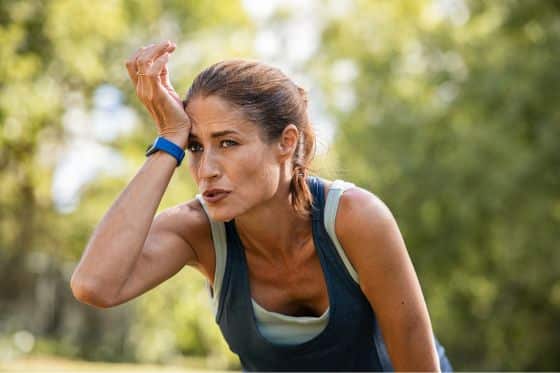As the temperatures rise and the days grow longer, summer running presents both exciting opportunities and unique challenges for dedicated athletes. Embracing the warmth while pounding the pavement can invigorate your routine, but staying safe in the heat is crucial to prevent exhaustion and heat-related illnesses.
Whether you’re training for a big race or simply enjoying the mental and physical benefits of running safely in the summer sun, understanding how to adapt your regimen is essential. From adjusting your hydration and nutrition strategies to exploring alternative workouts like strength training or swimming on particularly sweltering days, there are numerous ways to keep your fitness journey on track.
Join us as we dive into essential tips to make the most of your summer running experience, ensuring you stay cool, motivated, and injury-free all season long.
If you’re concerned about running-related injuries, consider requesting a free discovery visit to get personalized advice.
Mastering Summer Running
Summer running can be a rewarding experience when done right. Let’s explore some key strategies to make your warm-weather workouts both enjoyable and effective.
Embrace the Early Morning Breeze
Beat the heat by lacing up your running shoes at dawn. Early morning runs offer cooler temperatures and a refreshing start to your day.
The crisp morning air can invigorate your senses and set a positive tone for the hours ahead. Plus, you’ll avoid the intense midday sun that can zap your energy and increase the risk of heat-related issues.
Running early also means less traffic and fewer distractions, allowing you to focus on your form and breathing. It’s a great way to kickstart your metabolism and boost your mood for the day ahead.
Remember, consistency is key. Try to establish a regular early morning running routine to reap the full benefits of this cooler, calmer time of day.
Dress Smart to Beat the Heat
Choosing the right attire can make a world of difference in your summer running comfort and performance. Opt for lightweight, breathable fabrics that wick away sweat and allow your skin to breathe.
Light-colored clothing reflects sunlight, helping to keep you cooler. Look for running gear with built-in UV protection to shield your skin from harmful rays. Don’t forget a breathable hat or visor to protect your face and eyes from the sun.
Consider investing in moisture-wicking socks to keep your feet dry and prevent blisters. And remember, less is often more when it comes to summer running attire – the less fabric covering your skin, the cooler you’ll stay.
If you’re unsure about the best gear for your summer runs, consider reaching out to a running expert for personalized advice.
Summer Running Safely in High Temperatures
As the heat rises, so does the importance of taking precautions to ensure your safety while running. Let’s delve into some crucial aspects of running safely in the heat.
Hydration: Your Best Friend
Proper hydration is paramount when running in hot weather. Your body loses fluids rapidly through sweat, and replacing these is crucial for performance and safety.
Start hydrating well before your run. Drink water consistently throughout the day, not just right before you head out. During your run, carry water with you or plan your route to include water fountains or stores where you can refuel.
Post-run hydration is equally important. Replenish not just water, but also electrolytes lost through sweating. Sports drinks or coconut water can be excellent choices for this.
Remember, thirst isn’t always an accurate indicator of hydration needs. By the time you feel thirsty, you may already be mildly dehydrated. A good rule of thumb is to check your urine color – it should be pale yellow, not dark.
Listen to Your Body
Tuning into your body’s signals is crucial when running in high temperatures. Recognize the signs of heat exhaustion and know when to slow down or stop.
Symptoms like dizziness, nausea, headache, or feeling unusually fatigued are red flags. If you experience any of these, find shade immediately, hydrate, and consider ending your run early.
Don’t push yourself to maintain your usual pace in extreme heat. It’s okay to slow down or take walking breaks. Remember, safety should always come before performance goals.
If you’re new to running or have any health concerns, it’s wise to consult with a running injury expert before embarking on intense summer running routines.
Alternatives to Summer Running in the Heat
When the temperature soars, sometimes the smartest choice is to switch up your workout routine. Let’s explore some effective alternatives that can keep you fit without risking heat-related issues.
Dive into Swimming Workouts
Swimming offers an excellent full-body workout that’s perfect for hot days. The water keeps you cool while providing resistance for strength building.
Lap swimming is a great cardiovascular exercise that’s easy on your joints. It works different muscle groups than running, providing a complementary workout to your usual routine.
For runners, swimming can be particularly beneficial for recovery. The low-impact nature of water workouts can help soothe sore muscles and prevent overuse injuries.
If you’re new to swimming workouts, start with simple laps and gradually increase your distance and intensity. Many pools offer adult swim classes if you want to improve your technique.
Remember, while swimming is refreshing, you can still get dehydrated. Be sure to drink water before, during, and after your swim sessions.
Strength Training for Runners
Incorporating strength training into your routine can significantly enhance your running performance and help prevent injuries. It’s also a great indoor alternative on scorching days.
Focus on exercises that target running-specific muscles. Squats, lunges, and calf raises strengthen your legs, while planks and Russian twists work your core – crucial for maintaining good running form.
Don’t neglect your upper body. Strong arms and shoulders help propel you forward and maintain proper posture during long runs.
Aim for 2-3 strength training sessions per week, allowing for rest days in between. Start with bodyweight exercises and gradually add weights as you build strength.
Remember, proper form is crucial to prevent injuries. If you’re unsure about your technique or want a personalized strength training plan, consider consulting a running injury expert.
If you have anymore questions about running in the heat book a free discovery visit today!
Call (954) 519-5404 or click here to schedule your free visit and take the first step toward an active but safe summer!
More Free Resources:
Download our Free Guide – Free Running Injury Report – Running Injury Expert, Davie, Florida, Ashley Kranz
Read our blog – Free Running Injury Report – Running Injury Expert, Davie, Florida, Ashley Kranz
Check out what others are saying – Google Reviews

